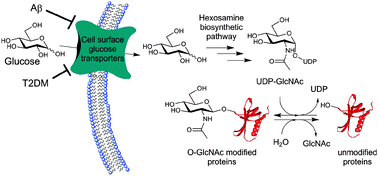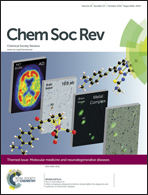O-GlcNAc and neurodegeneration: biochemical mechanisms and potential roles in Alzheimer's disease and beyond
Abstract
Alzheimer disease (AD) is a growing problem for aging populations worldwide. Despite significant efforts, no therapeutics are available that stop or slow progression of AD, which has driven interest in the basic causes of AD and the search for new therapeutic strategies. Longitudinal studies have clarified that defects in glucose metabolism occur in patients exhibiting Mild Cognitive Impairment (MCI) and glucose hypometabolism is an early pathological change within AD brain. Further, type 2 diabetes mellitus (T2DM) is a strong risk factor for the development of AD. These findings have stimulated interest in the possibility that disrupted glucose regulated signaling within the brain could contribute to the progression of AD. One such process of interest is the addition of O-linked N-acetylglucosamine (O-GlcNAc) residues onto nuclear and cytoplasmic proteins within mammals. O-GlcNAc is notably abundant within brain and is present on hundreds of proteins including several, such as tau and the amyloid precursor protein, which are involved in the pathophysiology AD. The cellular levels of O-GlcNAc are coupled to nutrient availability through the action of just two enzymes. O-GlcNAc transferase (OGT) is the glycosyltransferase that acts to install O-GlcNAc onto proteins and O-GlcNAcase (OGA) is the glycoside hydrolase that acts to remove O-GlcNAc from proteins. Uridine 5′-diphosphate-N-acetylglucosamine (UDP-GlcNAc) is the donor sugar substrate for OGT and its levels vary with cellular glucose availability because it is generated from glucose through the hexosamine biosynthetic pathway (HBSP). Within the brains of AD patients O-GlcNAc levels have been found to be decreased and aggregates of tau appear to lack O-GlcNAc entirely. Accordingly, glucose hypometabolism within the brain may result in disruption of the normal functions of O-GlcNAc within the brain and thereby contribute to downstream neurodegeneration. While this hypothesis remains largely speculative, recent studies using different mouse models of AD have demonstrated the protective benefit of pharmacologically increased brain O-GlcNAc levels. In this review we summarize the state of knowledge in the area of O-GlcNAc as it pertains to AD while also addressing some of the basic biochemical roles of O-GlcNAc and how these might contribute to protecting against AD and other neurodegenerative diseases.

- This article is part of the themed collection: Molecular Medicine and Neurodegenerative Diseases

 Please wait while we load your content...
Please wait while we load your content...